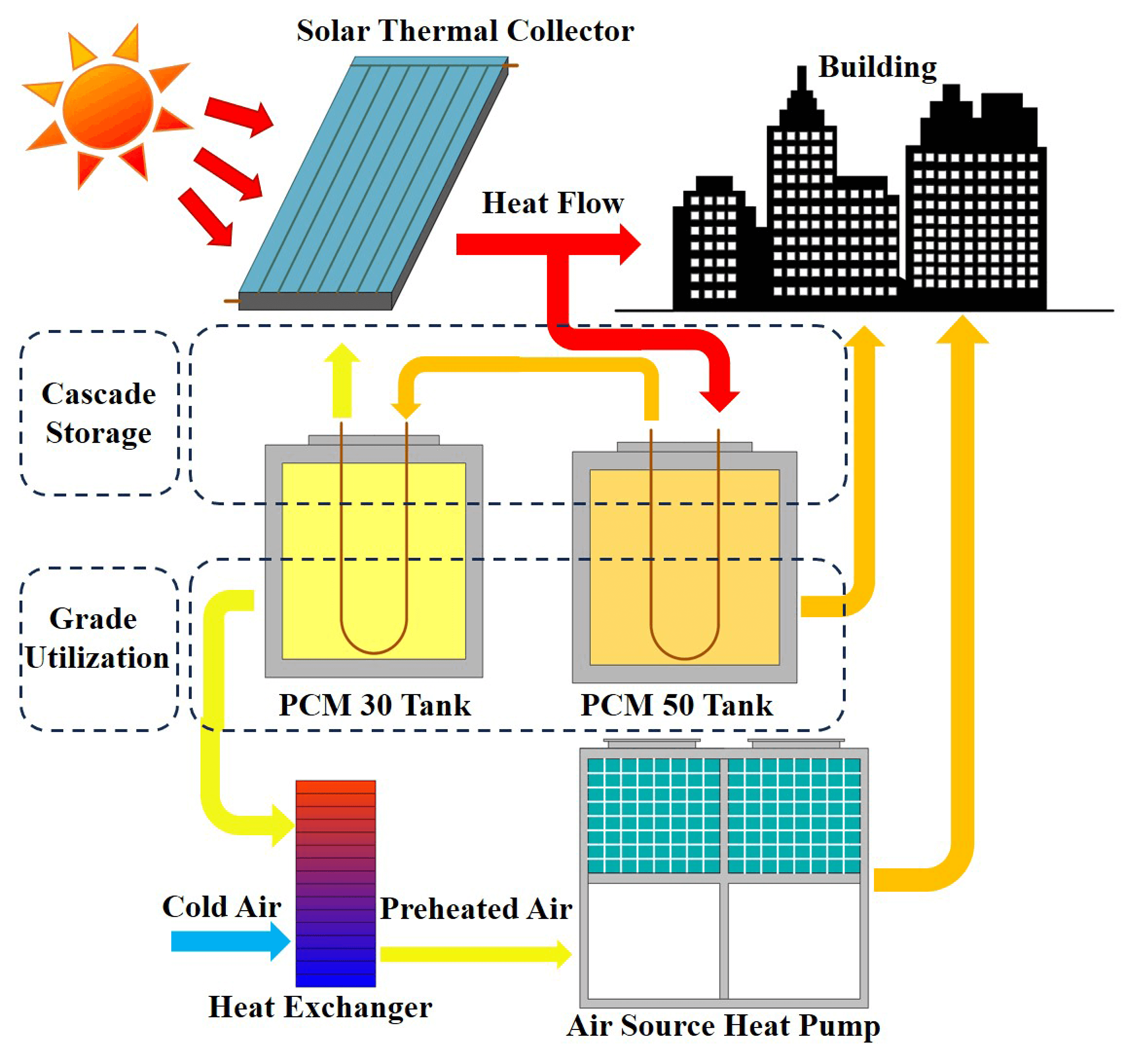 Open Access
Open Access
ARTICLE
Study on Optimization of Two-Stage Phase Change Heat Storage Coupled Solar-Air Source Heat Pump Heating System in Severe Cold Region
1 School of Civil and Architectural Engineering, Cangzhou Jiaotong College, Huanghua, 061199, China
2 School of Mechanical and Power Engineering, Cangzhou Jiaotong College, Huanghua, 061199, China
3 China Resources Electric Power (Bohai New Area) Co., Ltd., Huanghua, 061199, China
* Corresponding Author: Yan Jia. Email:
(This article belongs to the Special Issue: Future Innovative Solar Collectors, Technologies, and Materials for Sustainable Development)
Energy Engineering 2025, 122(4), 1603-1627. https://doi.org/10.32604/ee.2025.062908
Received 30 December 2024; Accepted 24 February 2025; Issue published 31 March 2025
Abstract
The development of efficient and clean heating technologies is crucial for reducing carbon emissions in regions with severe cold regions. This research designs a novel two-stage phase change heat storage coupled solar-air source heat pump heating system structure that is specifically designed for such regions. The two-stage heat storage device in this heating system expands the storage temperature range of solar heat. The utilization of the two-stage heat storage device not only makes up for the instability of the solar heating system, but can also directly meet the building heating temperature, and can reduce the influence of low-temperature outdoor environments in severe cold regions on the heating performance of the air source heat pump by using solar energy. Therefore, the two-stage phase change heat storage coupled to the solar energy-air source heat pump heating system effectively improves the utilization rate of solar energy. A numerical model of the system components and their integration was developed using TRNSYS software in this study, and various performance aspects of the system were simulated and analyzed. The simulation results demonstrated that the two-stage heat storage device can effectively store solar energy, enabling its hierarchical utilization. The low-temperature solar energy stored by the two-stage phase change heat storage device enhances the coefficient of performance of the air source heat pump by 11.1% in severe cold conditions. Using the Hooke-Jeeves optimization method, the annual cost and carbon emissions are taken as optimization objectives, with the optimized solar heat supply accounting for 52.5%. This study offers valuable insights into operational strategies and site selection for engineering applications, providing a solid theoretical foundation for the widespread implementation of this system in severe cold regions.Graphic Abstract

Keywords
Cite This Article
 Copyright © 2025 The Author(s). Published by Tech Science Press.
Copyright © 2025 The Author(s). Published by Tech Science Press.This work is licensed under a Creative Commons Attribution 4.0 International License , which permits unrestricted use, distribution, and reproduction in any medium, provided the original work is properly cited.


 Submit a Paper
Submit a Paper Propose a Special lssue
Propose a Special lssue View Full Text
View Full Text Download PDF
Download PDF Downloads
Downloads
 Citation Tools
Citation Tools